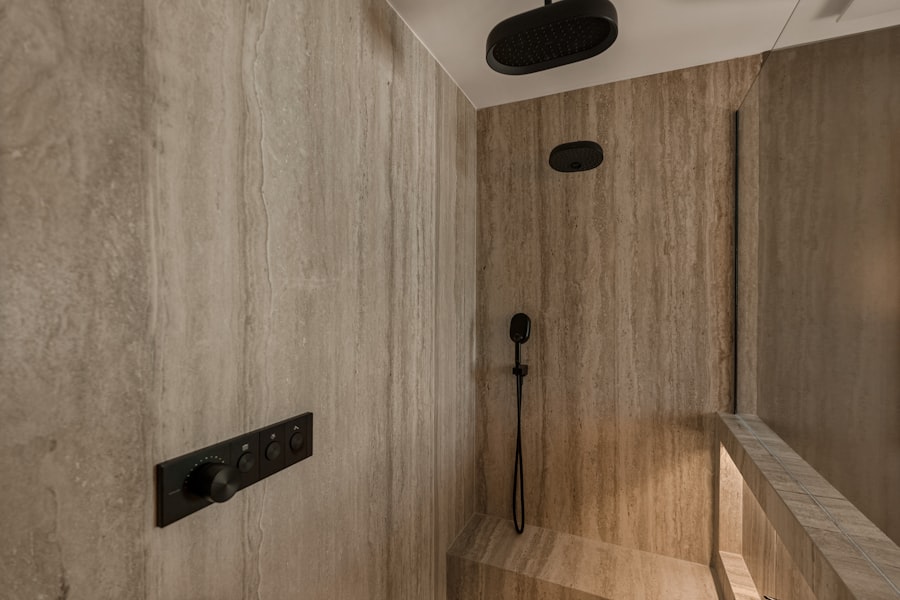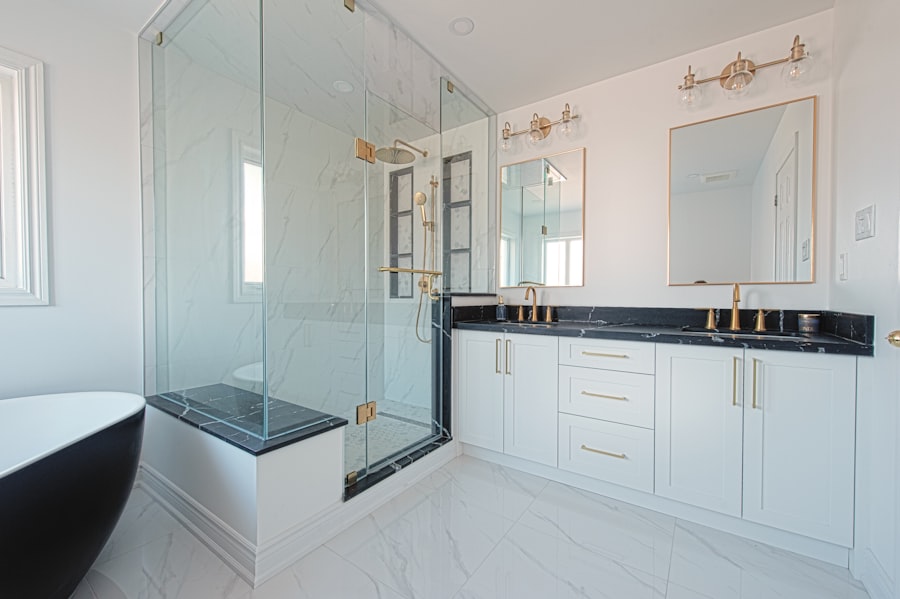Shower renovation is an increasingly popular home improvement project that can significantly enhance both the functionality and aesthetic appeal of a bathroom. As one of the most frequently used spaces in a home, the shower area deserves careful consideration and thoughtful design. Renovating a shower not only improves the overall look of the bathroom but can also increase the property value, making it an attractive investment for homeowners.
With a myriad of options available, from modern designs to traditional styles, the process can be both exciting and overwhelming. The decision to renovate a shower often stems from various motivations, such as outdated fixtures, water damage, or simply a desire for a more luxurious experience. Homeowners may find themselves drawn to the idea of creating a personal oasis where they can unwind after a long day.
The renovation process involves several key elements, including selecting the right design, fixtures, materials, and storage solutions. Each of these components plays a crucial role in achieving a cohesive and functional shower space that meets individual needs and preferences.
Key Takeaways
- Start your shower renovation with a clear plan and design vision.
- Choose shower designs and fixtures that balance style, functionality, and durability.
- Update walls and flooring with water-resistant, easy-to-clean materials.
- Integrate smart storage solutions to keep your shower organized and clutter-free.
- Enhance comfort and convenience by adding technology and luxury features.
Choosing the Right Shower Design
When embarking on a shower renovation, the first step is to choose a design that aligns with both personal taste and the overall style of the bathroom. The design can range from sleek and contemporary to rustic and traditional, depending on the homeowner’s vision. For instance, a frameless glass shower enclosure can create an illusion of space and light, making it ideal for smaller bathrooms.
In contrast, a tiled shower with intricate patterns can serve as a stunning focal point in a larger bathroom. In addition to aesthetics, practical considerations must also be taken into account when selecting a shower design. The layout should facilitate ease of movement and accessibility, particularly for families or individuals with mobility challenges.
Walk-in showers with low thresholds are becoming increasingly popular due to their safety features and ease of use. Furthermore, incorporating built-in benches or shelves can enhance functionality while maintaining a clean and uncluttered look.
Selecting the Best Shower Fixtures

The choice of shower fixtures is pivotal in defining the overall experience of using the shower. Fixtures encompass everything from showerheads and faucets to valves and controls. When selecting these components, homeowners should consider both style and performance.
For example, rain showerheads have gained popularity for their ability to provide a spa-like experience, mimicking the sensation of standing under a gentle waterfall. Adjustable showerheads offer versatility, allowing users to switch between different spray patterns based on their preferences. In addition to aesthetics and functionality, water efficiency is an important factor in fixture selection.
Many modern fixtures are designed to conserve water without sacrificing performance. Low-flow showerheads can significantly reduce water usage while still delivering a satisfying shower experience. Homeowners should also pay attention to the finish of the fixtures; options such as brushed nickel, chrome, or matte black can complement various design themes and add an extra layer of sophistication to the space.
Updating Your Shower Walls and Flooring
| Metric | Details | Typical Range | Notes |
|---|---|---|---|
| Material Options | Tile, Acrylic, Fiberglass, Stone, PVC Panels | 5 main types | Choice affects durability and maintenance |
| Installation Time | Time required to update walls and flooring | 1 to 5 days | Depends on material and complexity |
| Water Resistance | Ability to prevent water damage | High to Very High | Essential for shower areas |
| Maintenance Frequency | How often cleaning or repairs are needed | Monthly to Quarterly | Varies by material type |
| Slip Resistance Rating | Safety metric for flooring | 0.4 to 0.6 (Coefficient of Friction) | Higher values indicate safer surfaces |
| Cost Range | Material and installation combined | Low to High | Varies widely by choice and region |
| Durability | Expected lifespan of materials | 5 to 20+ years | Stone and tile tend to last longer |
The walls and flooring of a shower play a crucial role in both its appearance and functionality. When renovating, homeowners have numerous options for materials that can enhance the overall look while providing durability and ease of maintenance. Ceramic tiles are a classic choice due to their versatility in design and color.
They can be arranged in various patterns, such as herringbone or subway tile layouts, to create visual interest. In addition to tiles, natural stone options like marble or granite can add an element of luxury to the shower space. However, it is essential to consider the maintenance requirements of these materials; while they are stunning, they may require sealing to prevent water damage or staining.
For flooring, slip-resistant materials are paramount for safety reasons. Vinyl or textured tiles can provide both style and safety, ensuring that the shower remains a secure environment.
Incorporating Smart Storage Solutions
Effective storage solutions are vital in maximizing the functionality of a renovated shower space. Clutter can detract from the serene atmosphere that many homeowners seek to create in their bathrooms. Therefore, incorporating smart storage options is essential for maintaining organization while enhancing accessibility.
Built-in niches are an excellent way to provide storage for toiletries without sacrificing wall space or aesthetics. These recessed shelves can be designed to blend seamlessly with the surrounding tiles. Another innovative storage solution is the use of corner shelves or caddies that utilize otherwise wasted space.
These can be particularly useful in smaller showers where every inch counts. Additionally, wall-mounted baskets or hooks can keep items like loofahs and washcloths within easy reach while adding a decorative touch. By thoughtfully integrating storage solutions into the design, homeowners can create a functional yet visually appealing shower environment.
Adding Luxurious Touches to Your Shower Space

To elevate the shower experience from ordinary to extraordinary, homeowners may wish to incorporate luxurious touches that enhance comfort and style. One popular option is installing multiple showerheads or body sprays that provide a spa-like experience reminiscent of high-end resorts. These features allow users to customize their showers according to their preferences, whether they desire a gentle mist or invigorating massage.
Another way to infuse luxury into the shower space is through the use of high-quality materials and finishes. Consider adding features such as heated floors or towel warmers for added comfort during colder months. Ambient lighting can also play a significant role in creating a relaxing atmosphere; dimmable LED lights or strategically placed sconces can transform the shower into a tranquil retreat.
By focusing on these luxurious elements, homeowners can create an indulgent experience that enhances their daily routine.
Enhancing Your Shower Experience with Technology
In today’s digital age, technology has made its way into nearly every aspect of our lives, including bathroom renovations. Smart technology can significantly enhance the shower experience by offering convenience and customization at users’ fingertips. For instance, digital thermostatic controls allow users to set their desired water temperature with precision, eliminating the discomfort of sudden temperature changes during showers.
Moreover, some advanced systems offer features such as programmable settings that remember individual preferences for water temperature and spray patterns. Bluetooth-enabled speakers integrated into the shower system allow users to enjoy their favorite music or podcasts while bathing, further enhancing relaxation and enjoyment. Additionally, smart water monitoring systems can track water usage and provide insights into consumption patterns, promoting sustainability while ensuring an enjoyable experience.
Maintaining Your Newly Renovated Shower
Once the renovation is complete, maintaining the newly updated shower is essential for preserving its beauty and functionality over time. Regular cleaning is crucial to prevent mold and mildew buildup, which can occur in humid environments like bathrooms. Homeowners should opt for non-abrasive cleaners that are safe for their chosen materials; for instance, vinegar solutions work well on glass surfaces without causing damage.
In addition to routine cleaning, periodic inspections are necessary to identify any potential issues early on. Checking for leaks around fixtures or seals can prevent water damage and costly repairs down the line. Homeowners should also be mindful of water quality; hard water can lead to mineral buildup on fixtures and surfaces, necessitating regular descaling treatments.
By implementing these maintenance practices, homeowners can ensure that their renovated showers remain beautiful and functional for years to come.




